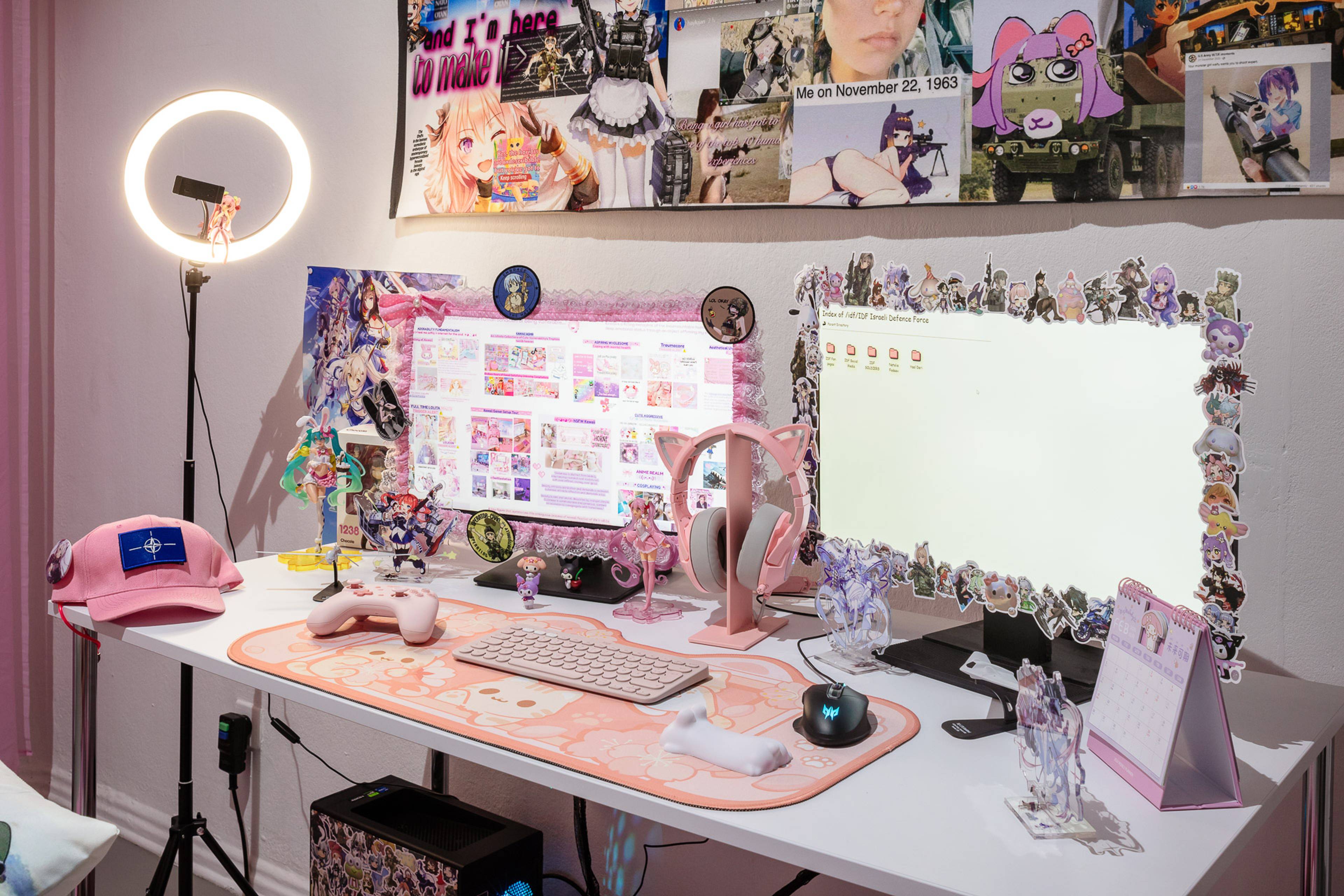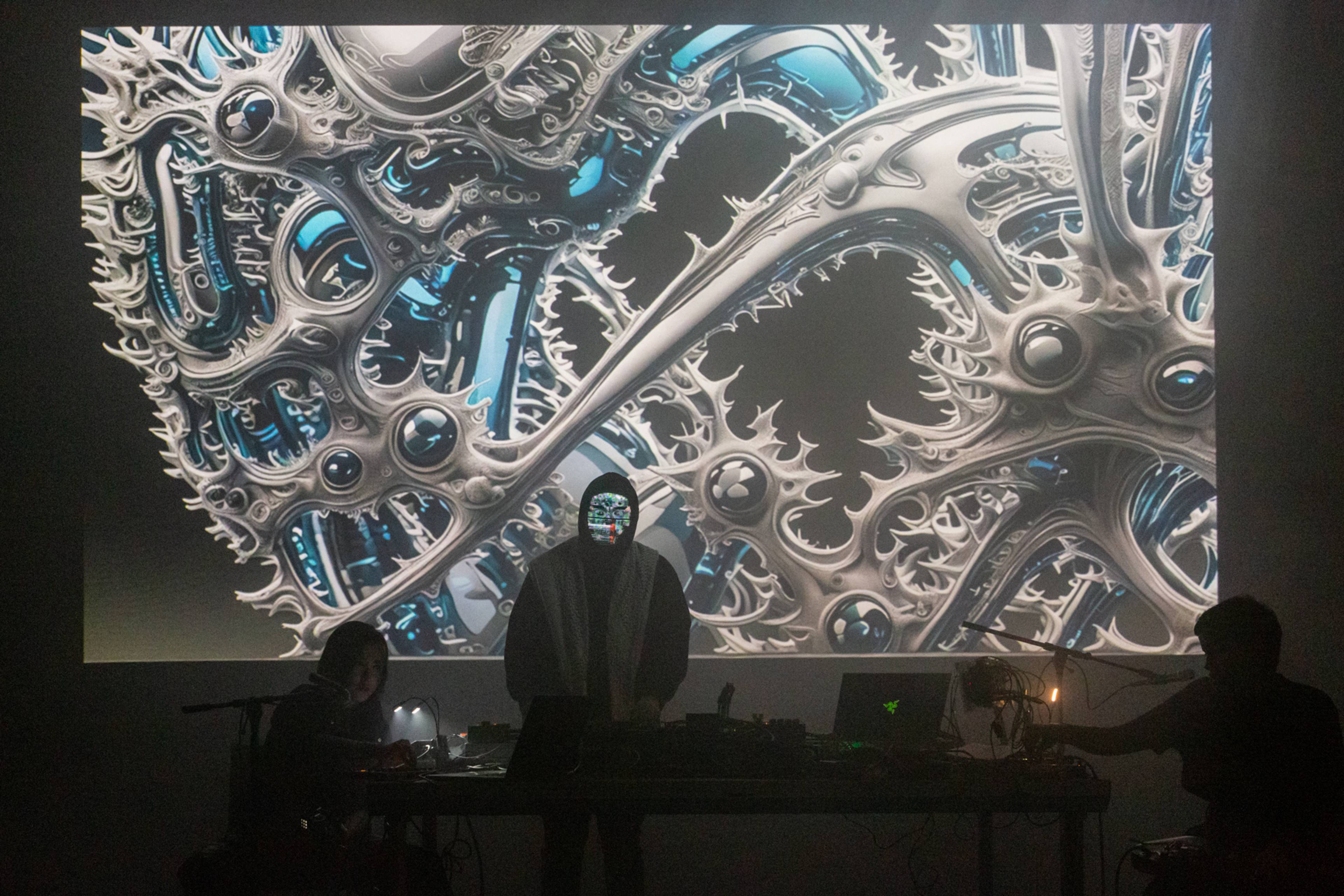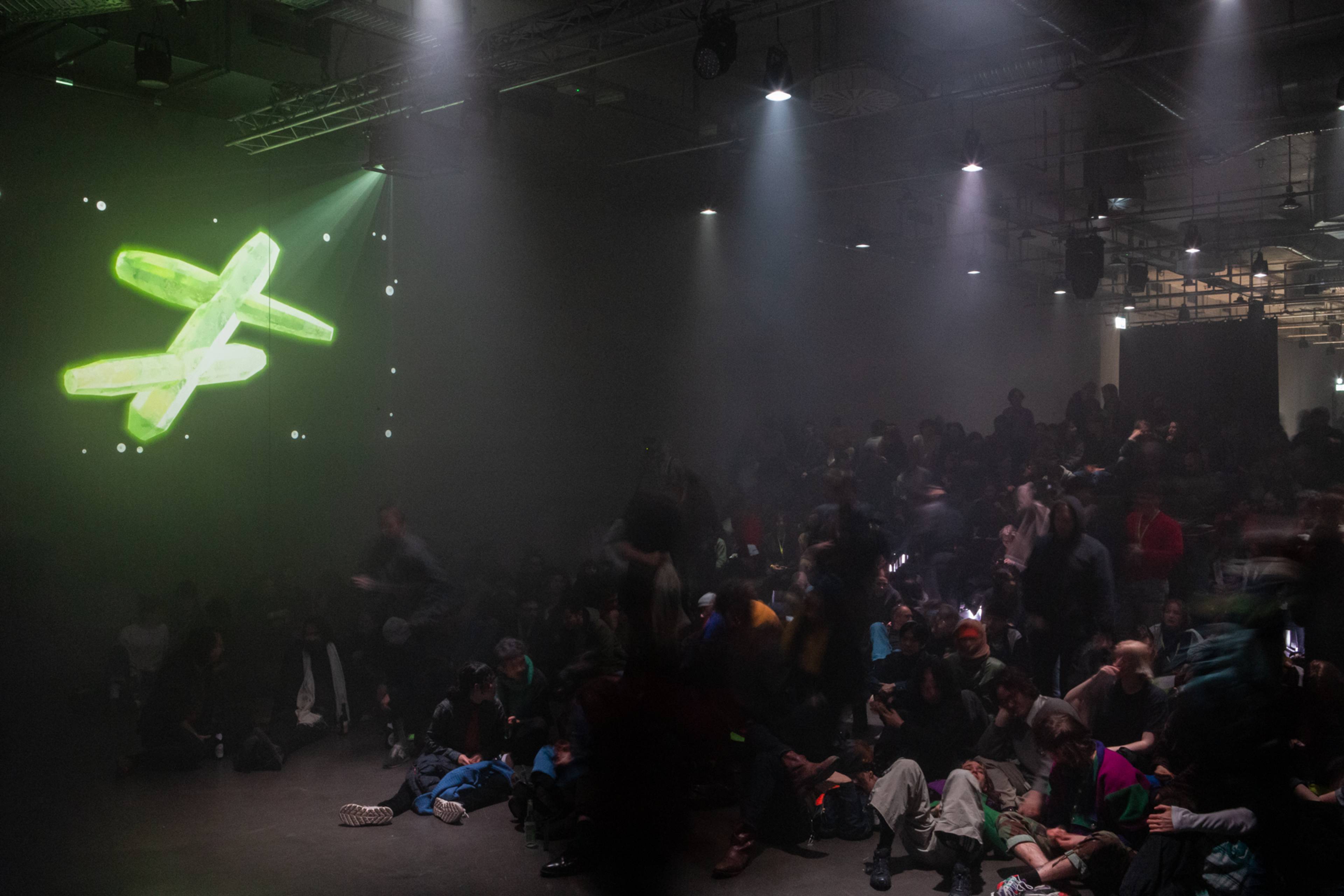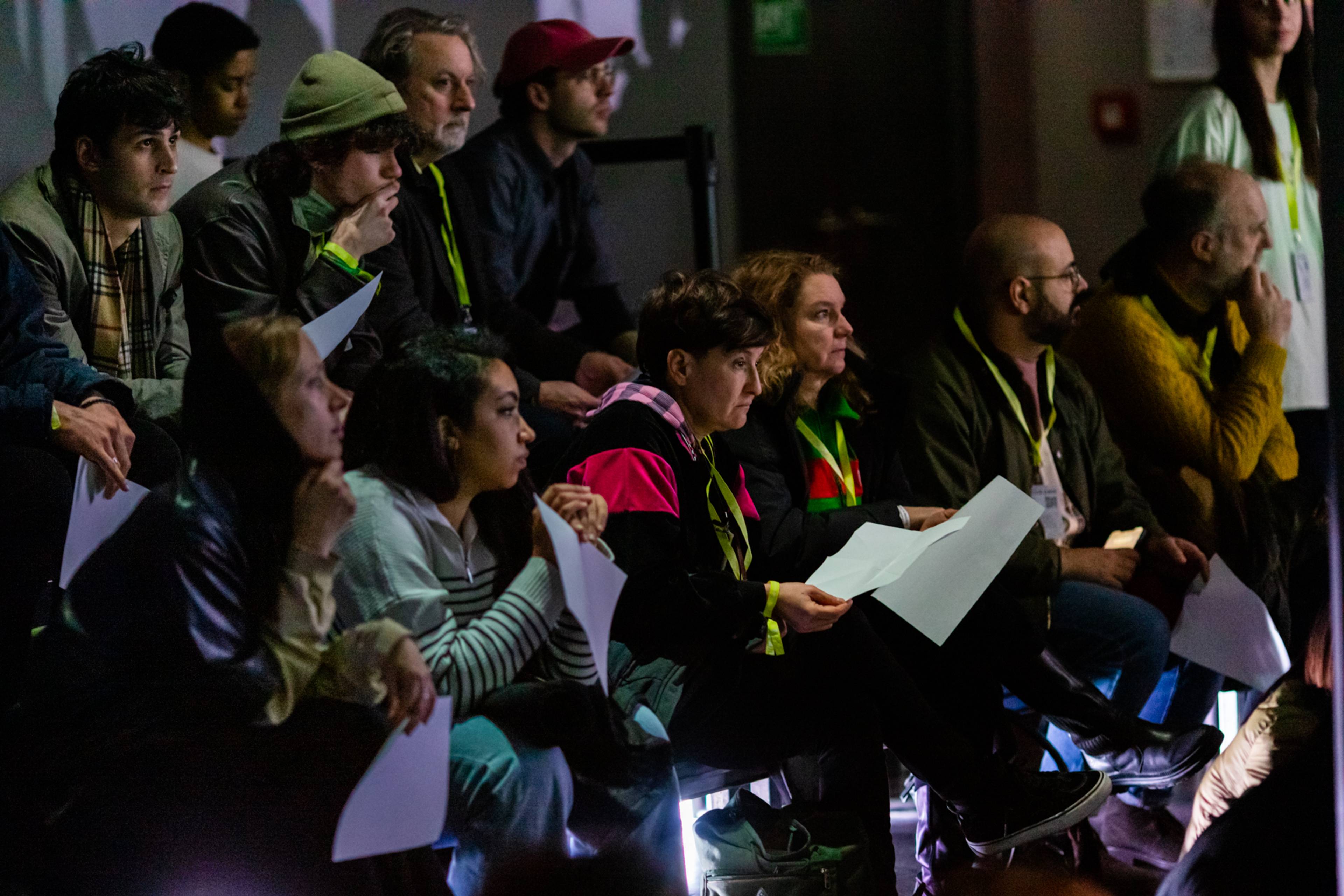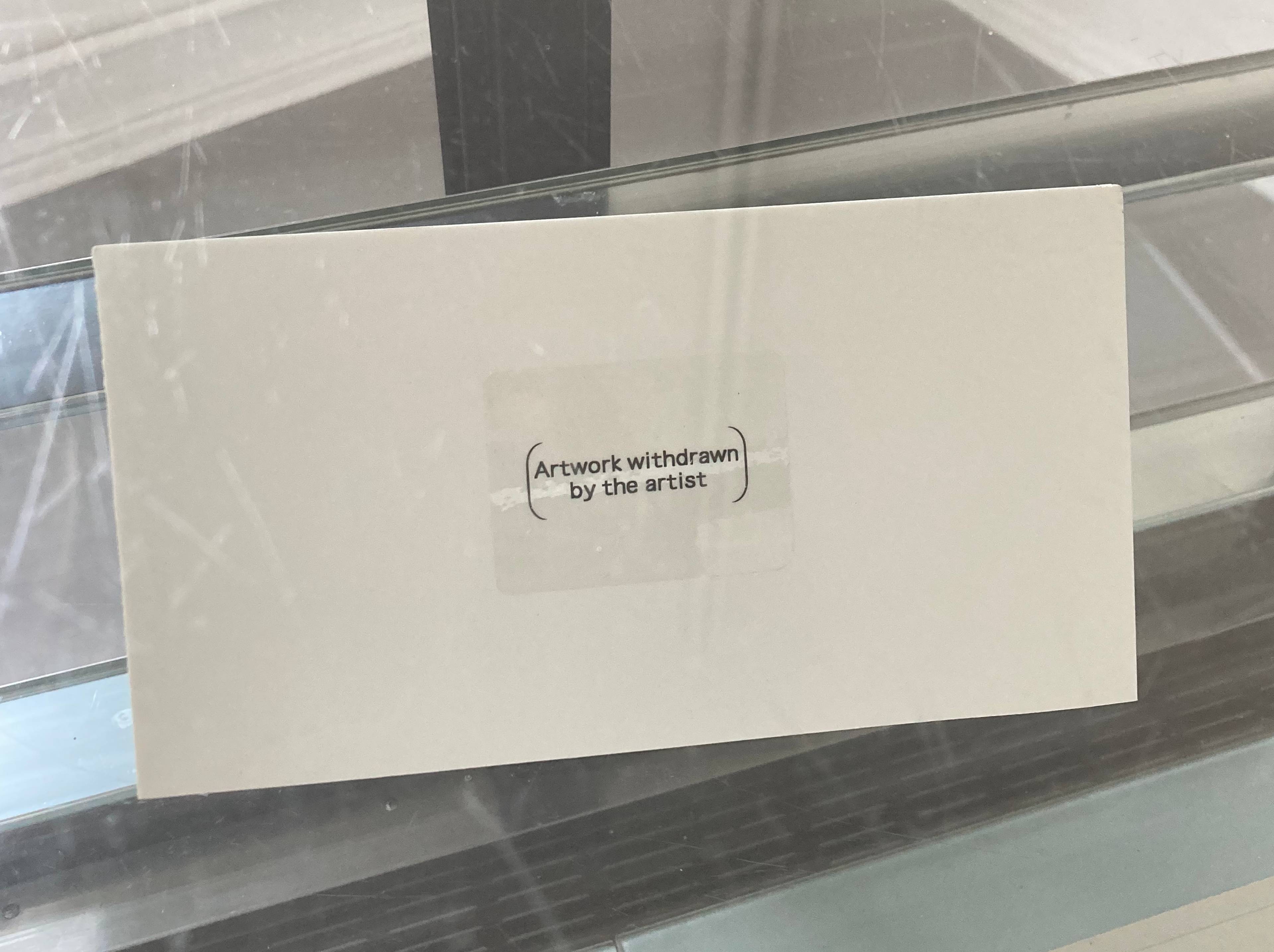Several years ago, my first time ever en route to Berlin, the RyanAir seating algorithm placed me in a middle seat next to a really hot guy. He was on his way to transmediale, an annual convening dedicated to media theory, art, and digital culture which I then attended on his recommendation. This meet-cute was a rare example of technology improving people’s lives. I have carried my library books around in a tote bag from the festival ever since.
Wednesday, 31 January
Opening the 2024 edition, Canadian writer Cory Doctorow delivered the Marshall McLuhan Memorial Lecture on the subject of “enshittification,” the pathology afflicting the internet today. At first, he explains, platforms like Facebook and Google seem great, freely connecting us to information and new social worlds. They grow and expand, often operating at a financial loss … until selling out their users to allocate value to their business customers. Then, absent regulatory policy or competition, they are able to abuse their business customers to reallocate value to themselves, which is when enshittification takes hold. Finally, in a stage we have yet to reach but are presently careening towards, Doctorow argues, these platforms reach a state of terminal uselessness and die. But their greed-fueled suicide is a slow one, and in the meantime, we’re stuck with them as a state of unusability gradually mounts.
“Unusability” became something of a buzzword, a coded incantation or proxy, over the course of this year’s transmediale. It is the overarching condition of the “Enshittocene,” as Doctorow has named our epoch. “Unusability” also gestures towards stuckness, impossibility, and refusal: a sense that things aren’t working, a sense of things that can’t be said or done. Something has not been working in Berlin, lately (and I don’t mean the unemployed bohemian layabouts). Something’s the matter, and the harder the powers that be try to repress it, the more forcefully it demands to be addressed.
Harold Lechien, Frizbee Ceramics, Gabriel René Franjou, A BOX IS A BOX IS A BOX, 2024. Installationview, transmediale 2024, Betonhalle silent green Kulturquartier, Berlin. Photo: Laura Fiorio
In December, in the shadow of the war in Gaza, the Berlin Senate’s Department of Culture introduced a new “anti-discrimination” measure requiring all recipients of state cultural funding – which is to say, nearly every artist or arts institution working in the city – to sign a clause pledging their opposition to antisemitism. The fine print of this hairy double-negative: The Senate’s definition, adopted from the International Holocaust Remembrance Alliance, conflated “antisemitism” with anti-Zionism, effectively making it illegal for artists to publicly oppose the war in Gaza – or, for that matter, the occupation of the West Bank, the development of settlements, and other human rights abuses by the Israeli state vis-a-vis Palestine.
Even prior to the Senate clause, a climate of censorship had been mounting in the wake of the 7 October Hamas attacks on Israel and the resulting invasion. An open letter by a group of Jewish cultural workers in Berlin, published on 23 October, observed that public gatherings across Germany with “presumed Palestinian sympathies,” including those organized by Jewish groups, had been banned by regional and city governments. The months since have seen a widespread crackdown on nonviolent protests and political expression, including vehement suppression of anything that could be construed as solidarity with Palestine.
Hexorcismos in collaboration with Kloxii Li and Ale Hop performs at the opening of transmediale 2024, silent green Kulturquartier, Berlin. Photo: Laura Fiorio
A movement called #StrikeGermany launched in response to these repressive conditions, asking international artists and cultural practitioners to withdraw from publicly funded cultural institutions and events (such as transmediale). Over 1600 artists and thinkers have, as of this writing, joined the boycott, among them Annie Ernaux, Lawrence Abu Hamdan, and Stefano Harney. Perhaps as a result of this organizing – which has serious leverage in Berlin, where arts and culture account for about a quarter of the city’s economy – the Berlin Senate dropped the resolution in January. But a restrictive atmosphere remains, and public demonstrations are still heavily policed. So #StrikeGermany continues, with transmediale among the events affected.
In a statement issued on 19 January, transmediale’s organizers announced that several artists and a curator had withdrawn from the festival. The statement condemned the anti-discrimination clause, which had by then been annulled, for inhibiting freedom of artistic expression; restated the festival’s commitment to “safeguarding a free and respectful space for dialogue, openness and exchange”; and demanded a ceasefire in Gaza. Perhaps anticipating a demand that, as a boundary-pushing institution, they go even further in condemning the German state’s position, the statement spells out that the festival, like so much cultural production in Berlin, depends on state funding – as if to ask between the lines, “What more can we do?”
Opening of transmediale 2024, silent green Kulturquartier, Berlin. Photo: Laura Fiorio
Thursday, 1 February
I’m hungover from last night’s festival opening – an evening filled, as promised, with “dialogue, openness, and exchange,” as well as strobe-lit, deconstructed club sets and sekt auf eis. Today, the discourse portion kicks off in earnest with a performance-lecture by Winnie Soon, a Hong Kong-born artist now living in Denmark. She sits onstage, not so much moaning as affectlessly emitting Ahhhhhs. These onomatopoeiae, visualized on a PowerPoint slide, are from one of hundreds of thousands of posts censored from the Chinese social network Weibo, which Soon archives and collects. She flips through more slides, reading from some of them. All were removed without a stated reason. None come across as explicitly political or particularly transgressive. Some, like the “Ahhh Ahhh Ahh Ahh Ahhhh” post, are outright nonsense, highlighting censorship’s absurd paranoia. Soon’s practice centers on making these posts, and the anonymous users who write them,“unerasable” – challenging the paradigm where, ordinarily, they would simply disappear. Be disappeared.
As she reads, blank pieces of printer paper are passed throughout the audience and I expectantly await some kind of, I don’t know, drawing exercise? But, no, this page is intentionally left blank. We hold our paper sheets for most of the talk before passing them back to Winnie, who binds them into a big, blank book. The gesture, she explains, harkens back to the “blank paper” protests (sometimes called the “A4 revolution”) that began in China against president Xi Jinping’s Zero-COVID Policy, where blank sheets of paper edged towards signs of dissent in a context where political demonstration is highly suppressed.
Winnie Soon and Rachel O’Dwyer, Poetics of Unerasable Characters, performance documentation, transmediale 2024, silent green Kulturquartier, Berlin. Photo: Laura Fiorio
Next, Alex Quicho and Noura Tafeche take the stage, flanked by high-speed reels of hyper-femme snapshots playing on the two jumbo screens. In a performance titled after a Lana Del Rey lyric – “She’s Evil, Most Definitely Subliminal” – they take turns reading about grassroots cultural artifacts produced by and for online girls, beginning with a run-down on “manifestation subliminals”: videos that creators embed with secret messages, designed to reprogram a viewer’s subconscious to attract popularity, wealth, and hotness. Images of thin, white women, Y2K girlposts, flash across the screens in tune with new-age affirmations (I AM A MAGNET FOR BEAUTY AND ADMIRATION. ALL OF THE MONEY I SPEND COMES BACK TO ME, MULTIPLIED) and I wonder if the afternoon has veered safely into apolitical territory.
Then, gradually, the arena of analysis shifts from manifestation to military e-girls, like the TikTok trope of the “sexy IDF soldier” whose Bambi-eyed visage is deployed to distract from the violence she’s made to carry out. This is “operational beauty,” as Alex terms it – riffing on the filmmaker Harun Farocki’s notion of “operational images,” which do not just reflect, but materially reshape, the world around us. Grounding their performance in the oh-so-harmless figure of the girl, Noura and Alex operationalize the e-girl for a counter-strike, carving out a space to express something that is verboten to touch directly – the performance itself functioning a bit like the “manifestation subliminal” videos it takes as its subject matter. It ends to thunderous applause as the two hug, their lingering embrace telegraphing a mixture of relief and fear.
Noura Tafeche and Alex Quicho, She’s Evil, Most Definitively Subliminal, performance documentation, transmediale 2024, silent green Kulturquartier, Berlin. Photo: Laura Fiorio
Friday, 2 February
Never before have I seen the denizens of the global art/academia industry dressed so supportively. By day two, a solid proportion of attendees are sporting official merch, holographic totes and hooded sweatshirts emblazoned with “YOU’RE DOING AMAZING, SWEETIE,” the festival’s title borrowing Kris Kardashian’s most famous utterance. Pamphlets, screens, and objects for purchase bedecked with the phrase dot the venue, recurring like an affirmation. A dose of encouragement for those who chose to attend? Many others, understandably, chose not to.
The withdrawal of several artist-signatories of #StrikeGermany before the opening left conspicuous absences, including a crater in the Friday evening performance schedule (Mario Santanilla, Holly Childs, and Gediminas Zygus) and an empty vitrine in the exhibition at Kunstquartier Bethanien (Avril Corroon). Then, in between scheduled events on Friday afternoon, it was announced that a panel entitled “Anti-Colonial Tech through Resistance and Discomforts” would not be taking place. No reason was immediately given, though its panelists circulated a statement later that day:
“We came to Berlin to make a contribution to this year’s festival […] Yet we are not on stage. After our arrival, we were informed that we could not be explicit about a certain solidarity. For us, it is impossible to speak about anti-colonial technologies under these conditions.”
The announcement sent palpable shockwaves. Had they been briefed differently than the other participants on account of their panel’s presumed content? Had other transgressions, gestures towards off-limits subject matter earlier in the day, earned the festival leadership a reprimand from higher up, forcing them to crack down? Or had this panel’s participants decided that a day-of-show withdrawal would send a stronger message? Answers never came. I went to sleep wondering if the festival would proceed the next morning.
Notice of Avril Coroon’s withdrawal from the exhibition “this is perfect, perfect, perfect,” transmediale 2024, Kunstraum Kreuzberg/Bethanien, Berlin
Saturday, February 3
Caught off guard by road closures due to a massive protest marching through the heart of the city – a demonstration against the far-right AfD party – I arrive late to a joint book launch by Georgina Voss and Rachel O’Dwyer. Earlier in the weekend, Georgina had spoken on a panel about the “PayPal to Palantir pipeline”: Peter Thiel used the $50 million he earned selling the payments company to fund his nefarious “data-integration” software startup, which now contracts with US Border Patrol and the IDF. Rachel reads a chapter from her new book Tokens (2023), looking at, among other things, how sex workers cannily navigate restrictions enforced by online infrastructure, from payment processors (like PayPal) to streaming sites like Twitch and OnlyFans.
For the closing talk later that evening, the auditorium at Haus der Kulturen der Welt was set up like a reality TV reunion set, and felt about as charged. Each of nine panelists is asked, in turn: Why did they stay in the program, in the face of such strong reasons to withdraw? Alex Quicho, the first to answer, returns to the subject of “unusability,” of present Western discourses as much as of the platforms they play out on. To posit something else, something new and generative, she felt it valuable to engage in the messiness as an IRL presence.
Festival “Reunion” closing out transmediale 2024, Haus der Kulturen der Welt, Berlin. Photo: Laura Fiorio
This, says artistic director Nóra Ó Murchú, is transmediale’s raison d’etre. She took up her role in 2021 amid coronavirus lockdowns. The isolation of that time, she observed, continues to hamper discourse, thought, and collectivity today. The festival’s goal is to offer a forum for publicly thinking through media and technology’s role in driving change; to make space for media practices that resist atomization. In an era like the Enshittocene, when the idea of an online “public” feels more tenuous than ever, the value in cultivating AFK spaces for this kind of work is clear.
Perhaps this year’s thematic approach, couched in the seeming harmlessness of reality TV, was also a canny deployment of tactical cuteness. Beneath that veneer, the festival sought to explore how “mundane forms of fascism” (as Nóra once put it) seep into mass-cultural consciousness. What kinds of subjects do reality-making media, from Instagram “girlbloggers” to fighter pilots’ heads-up cockpit displays, bring into existence? How do the constraints of the media we use to communicate and organize across distance shape the possibilities of expression? What sorts of performance do platforms compel, and what are the secondhand consequences? “I don’t have answers,” Nóra said on the press tour, choosing her words with the elegant precision of a smart woman who would prefer to keep her job. “I just try to give people a set of questions that help them navigate the world.”
Shaken up by a strike that started as a social media campaign in response to a live-streamed genocide, that the weekend was an example par excellence of media theory in practice cannot have been lost on its organizers. The festival looked at how the mundane horrors of content-ification are not at all separate from the kinds of brutality enacted in Gaza and elsewhere in the world today. The gaps in this year’s program – the spaces hammered open by participants withholding their work, as much as the conspicuous absences that pointed towards externally imposed restrictions – were as telling as its scheduled content. That entire populations can be written off as disposable as their slaughter is witnessed on social media is a structural fact, not a coincidence, of the disastrous regime of racial capitalism that governs our digitally networked present. To the malignant powers that brought us into the Enshittocene, it’s a feature, not a bug.
___
“this is perfect, perfect, perfect”
Kunstraum Kreuzberg/Bethanien, Berlin
31 Jan – 14 Apr 2024
“Uncensored Lilac”
transmediale studio, Berlin
26 Jan – 14 Apr 2024


